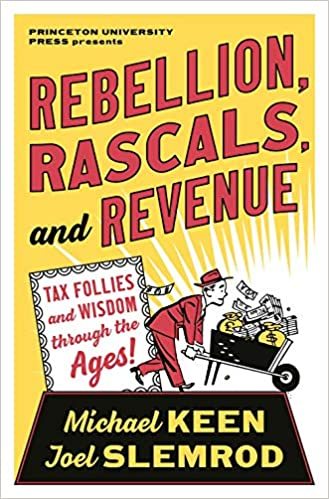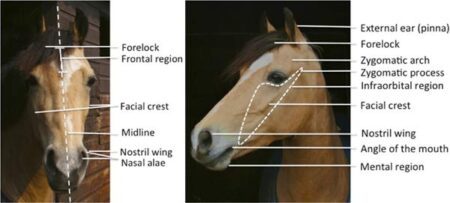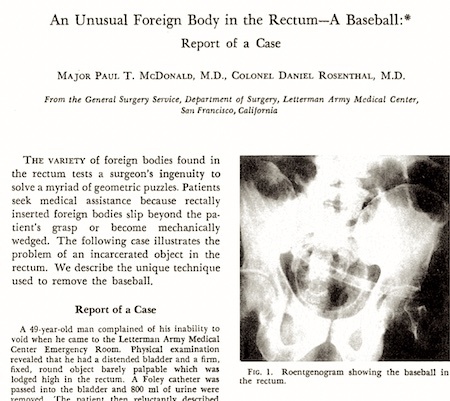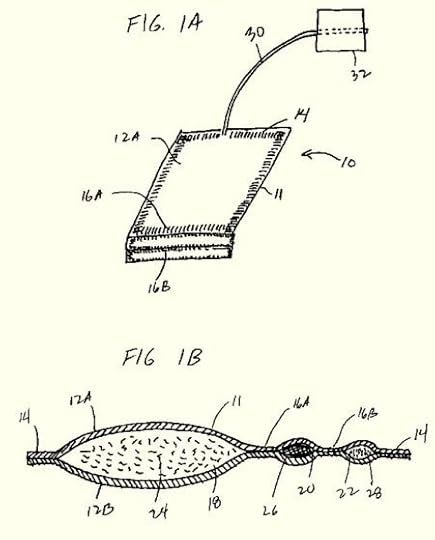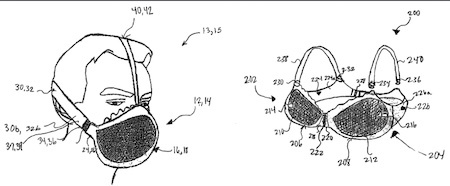Marc Abrahams's Blog, page 84
March 30, 2021
Prize Winner’s New Book About Death and Taxes and Follies
Joel Slemrod, who was awarded an Ig Nobel Prize for demonstrating a relationship between death and taxes, has a new book coming out.
The book is Rebellion, Rascals, and Revenue: Tax Follies and Wisdom through the Ages Hardcover, by Michael Keen and Joel Slemrod, published by Princeton University Press (scheduled publication date April 6, 2021).
The 2001 Ig Nobel Prize for economics was awarded to Joel Slemrod and Wojciech Kopczuk, for their conclusion that people find a way to postpone their deaths if that would qualify them for a lower rate on the inheritance tax.
They documented that research, in the study ”Dying to Save Taxes: Evidence from Estate Tax Returns on the Death Elasticity,” National Bureau of Economic Research Working Paper No. W8158, March 2001.

March 29, 2021
Facial Action Units for horses [study]
“Until now the full capacity of horse facial expressions to convey a range of information has been largely overlooked.”
This lack of capacity was addressed by the most recent (2015) addition to the AnimalFACS system. (FACS stands for Facial Action Coding System)
EquiFACS which is
“a scientific observational tool for identifying and coding facial movements in domestic horse (Equus caballus).”
– has defined 17 defined Action Units (Aus) for horses – which, for comparison, is 10 less than humans and 4 less than cats, but 1 more than dogs)
Details of the system can be found in: Wathan J, Burrows AM, Waller BM, McComb K (2015) EquiFACS: The Equine Facial Action Coding System. PLOS ONE 10(9): e0137818.
Research research by Martin Gardiner

March 28, 2021
Podcast Episode #1061: “Jean Berko Gleason’s Disgusting Word List”
In Podcast Episode #1061, Jean Berko Gleason shares an unfortunate lexicon with Improbable founder Marc Abrahams.
Remember, our Patreon donors, on most levels, get access to each podcast episode before it is made public.
Marc Abrahams encounters:
Jean Berko Gleason
Seth Gliksman, Production Assistant
Available on Spotify, Apple Podcasts, Overcast, Google Podcasts, AntennaPod, BeyondPod and elsewhere!

March 25, 2021
Baseball / Medical Skills: The Hidden Ball Trick
This decades-old medical report has received surprisingly little attention from the baseball community. Baseball season is about to begin again, in the USA. Please alert anyone to whom this study could be useful:
“An Unusual Foreign Body in the Rectum—A Baseball: Report of a Case,” M.P. McDonald and D. Rosenthal, Diseases of the Colon and Rectum, vol. 20, 1977, pp. 56-7. The authors report:
The following case illustrates the problem of an incarcerated object in the rectum. We describe the unique technique used to remove the baseball….
A 49-year-old man complained of his inability to void when he came to the Letterman Army Medical Center Emergency Room….The patient then reluctantly described his recent activity. He and his sexual partner had celebrated a World Series victory of the Oakland Athletics by placing a baseball (hardball) in his rectum because, as he put it, “I’m oversexed.” The presence of the baseball was confirmed by radiography (Fig. 1) and proctologic examination.
Under spinal anesthesia, the rectum was dilated and manipulations, including hooking the ball and pulling downward (enough to rip the cover of the ball), injecting air above the ball and giving downward traction, and obstetrical forceps delivery, failed….
[Eventually, an] assistant exerted digital upward pressure through the rectum and, combined with a force enough to raise the patient off the table, the ball was delivered through [a] colotomy.
This procedure differs, in most ways, from the traditional form of baseball’s hidden ball trick.

March 24, 2021
Seeking Improbable Advice from Libraries
Improbable Research, in concert with our friends & colleagues at the Museum Of Bad Art (MOBA), is cooking up some events for libraries. If you work at a library that provides events for your community, may I hit you up for some advice? You can reach me at marc@improbable.com

[image error]
March 22, 2021
Podcast Episode #1060: “How Much Saliva Does a Five-Year-Old Produce?”
In Podcast Episode #1060, Marc Abrahams shows an unfamiliar research study to fluid dynamicist Nicole Sharp. Dramatic readings and reactions ensue.
Remember, our Patreon donors, on most levels, get access to each podcast episode before it is made public.
Nicole Sharp encounters:
“Estimation of the Total Saliva Volume Produced Per Day in Five-Year-Old Children,” S. Watanabe, M. Ohnishi, K. Imai, E. Kawano, and S. Igarashi, Archives of Oral Biology, vol. 40, no. 8, August 1995, pp.781-782.
The authors of the study were awarded the Ig Nobel Prize for chemistry, in 2019.
Seth Gliksman, Production Assistant
Available on Spotify, Apple Podcasts, Overcast, Google Podcasts, AntennaPod, BeyondPod and elsewhere!

Avoiding teabag flotation annoyances [patent]
“It is common to prepare tea by immersion of a porous bag filled with tea into a cup of hot water.”
That being the case, it can be said that making tea with a teabag is not always 100% annoyance free.
“[…] when the porous bag is immersed in water, it has a tendency to rise up in the cup due to captured air bubbles and the light density of the materials in the bag. When the porous bag floats to the top of the cup, the rate of steeping of the materials into the cup is reduced.
Thus, it is commonplace for users to use a spoon to keep the porous bag totally immersed in the water. This repetitive task is annoying to many users. “
Following the granting of US patent 7,744,939 , for a ‘ Weighted infusion beverage package ‘ which incorporates ballast weights in each bag (see Figs. 1A & 1B) the annoyance may be reduced, if not entirely eliminated.
“[…] the annoying and repetitive task of pushing the bag down with a spoon (or other hand-held element) is avoided […] “
Research research by Martin Gardiner

March 18, 2021
Instability of an Unsteered Bicycle
A moving bicycle, when no one is riding it, is more stable than many people expect, but it is not completely stable. Here’s a curious look into the how and why of that:
“It Takes Two Neurons to Ride a Bicycle,” Matthew Cook, at Caltech, demonstration at NIPS 4 (2004).
Cook explains:
Past attempts to get computers to ride bicycles have required an inordinate amount of learning time (1700 practice rides for a reinforcement learning approach [1], while still failing to be able to ride in a straight line), or have required an algebraic analysis of the exact equations of motion for the specific bicycle to be controlled [2, 3]. Mysteriously, humans do not need to do either of these when learning to ride a bicycle. Here we present a two-neuron network1 that can ride a bicycle in a desired direction (for example, towards a desired goal or along a desired path), which may be chosen or changed at run time…
Figure 2: Instability of an unsteered bicycle. This shows 800 runs of a bicycle being pushed to the right. For each run, the path of the front wheel on the ground is shown until the bicycle has fallen over. The unstable oscillatory nature is due to the subcritical speed of the bicycle, which loses further speed with each oscillation.
(Thanks to Lieven Scheire for bringing this to our attention.)

March 16, 2021
Two Historic Brassiere-to-Face-Mask Innovations
 Dr. Elena Bodnar‘s 2009 Ig Nobel Prize-winning Emergency Bra may be the most spectacular and fashionable instance of brassiere design and protective-face-mask design intersecting. But it is not the first.
Dr. Elena Bodnar‘s 2009 Ig Nobel Prize-winning Emergency Bra may be the most spectacular and fashionable instance of brassiere design and protective-face-mask design intersecting. But it is not the first.
The 3M company’s N95 mask grew from an-early-1960s bra-cup design by Sara Little Turnbull, according to reports (“How One Woman Inspired The Design For The N95 Mask” and “N95“) by National Public Radio. (Thanks to Dominick Dunlop for bringing this to our attention.)
Here’s video of Dr. Bodnar giving the first public demonstration (assisted by Nobel laureates Wolfgang Ketterle, Orhan Pamuk, and Paul Krugman) of her invention, at the Ig Nobel Prize ceremony at Harvard University:
Here is some technical detail from Dr. Bodnar’s patent:

March 15, 2021
Podcast Episode #1059: “The Best Life Opera (Act 2)”
In Podcast Episode #1059, we hear the second act—a breathgiving look at all the zillions of species of life, gathered together in one big room—of “The Best Life”, a mini-opera which debuted in 2015 at the 25th First Annual Ig Nobel Ceremony.
Remember, our Patreon donors, on most levels, get access to each podcast episode before it is made public.
Seth Gliksman, Production Assistant
Available on Spotify, Apple Podcasts, Overcast, Google Podcasts, AntennaPod, BeyondPod and elsewhere!

Marc Abrahams's Blog
- Marc Abrahams's profile
- 14 followers


